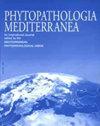Recovery after curettage of grapevines with esca leaf symptoms
IF 1.9
3区 农林科学
Q2 AGRONOMY
引用次数: 0
Abstract
Grapevine curettage was re-introduced in France in the early 2000s, and is important for facilitating recovery of plants from esca disease. This surgical practice involves removal of deadwood of vines with leaf symptoms, focusing on white rot generally observed at the centres of grapevine trunks. Assessment of the efficacy of this practice was initiated in the Bordeaux region in 2014. One ‘Sauvignon Blanc’ vineyard severely affected by esca was initially surveyed in the summer of 2014, to identify and treat vines with esca foliar symptoms. Annually thereafter, from 2014 to 2018, selected vine stocks were curetted. Two other ‘Sauvignon Blanc’ vineyards also displaying high levels of esca damage were added to the study in 2015 and 2016. Curettage treatments ceased in 2018, resulting in 11 trials (vineyard × year combinations). In total, 856 vines (422 curetted and 434 control vines) were then surveyed annually up to 2021, for assessments and comparisons of esca development. At each site, plants with esca symptoms recovered well after curettage: on average 85% of all curetted vines became asymptomatic the year immediately after the treatment. Six years after treatment, for curettage campaigns carried out in 2014 and 2015, more than half of the curetted vines were symptom-free, whereas <12% of the control vines were asymptomatic, and gradual loss of efficacy was observed at each site. The mean annual proportion of efficacy erosion was approx. 8% per year. This study highlights the possible short- and mid-term benefits of trunk surgery to enable recovery of esca-affected vines, and for them to recover and remain leaf-asymptomatic for several years.葡萄藤刮除后的恢复
21世纪初,法国重新引入了葡萄藤刮除术,这对促进葡萄藤从esca病中恢复很重要。这种手术方法包括去除有叶片症状的葡萄藤的枯木,重点是通常在葡萄藤树干中心观察到的白腐病。2014年,波尔多地区开始对这种做法的有效性进行评估。2014年夏天,我们对一个受esca严重影响的“长相思”葡萄园进行了初步调查,以识别和治疗有esca叶面症状的葡萄园。此后,从2014年到2018年,每年都会对选定的葡萄树进行修剪。另外两个“长相思”(Sauvignon Blanc)葡萄园也在2015年和2016年被添加到研究中,显示出严重的esca损害。刮除治疗于2018年停止,共进行了11次试验(葡萄园×年份组合)。在2021年之前,每年对856棵葡萄藤(422棵修剪过的葡萄藤和434棵对照葡萄藤)进行调查,以评估和比较esca的发展情况。在每个地点,有esca症状的植物在刮除后恢复良好:在所有刮除的葡萄藤中,平均85%在处理后的第二年没有症状。治疗6年后,在2014年和2015年开展的刮除运动中,超过一半的刮除葡萄藤无症状,而对照葡萄藤的无症状率<12%,并且在每个部位观察到疗效逐渐丧失。年平均有效侵蚀比例约为。每年8%。这项研究强调了树干手术可能带来的短期和中期益处,可以使受esca影响的葡萄藤恢复,并使其恢复并在数年内保持叶片无症状。
本文章由计算机程序翻译,如有差异,请以英文原文为准。
求助全文
约1分钟内获得全文
求助全文
来源期刊

Phytopathologia Mediterranea
生物-植物科学
CiteScore
4.40
自引率
8.30%
发文量
28
审稿时长
6-12 weeks
期刊介绍:
Phytopathologia Mediterranea is an international journal edited by the Mediterranean Phytopathological Union. The journal’s mission is the promotion of plant health for Mediterranean crops, climate and regions, safe food production, and the transfer of new knowledge on plant diseases and their sustainable management.
The journal deals with all areas of plant pathology, including etiology, epidemiology, disease control, biochemical and physiological aspects, and utilization of molecular technologies. All types of plant pathogens are covered, including fungi, oomycetes, nematodes, protozoa, bacteria, phytoplasmas, viruses, and viroids. The journal also gives a special attention to research on mycotoxins, biological and integrated management of plant diseases, and the use of natural substances in disease and weed control. The journal focuses on pathology of Mediterranean crops grown throughout the world.
The Editorial Board of Phytopathologia Mediterranea has recently been reorganised, under two Editors-in-Chief and with an increased number of editors.
 求助内容:
求助内容: 应助结果提醒方式:
应助结果提醒方式:


